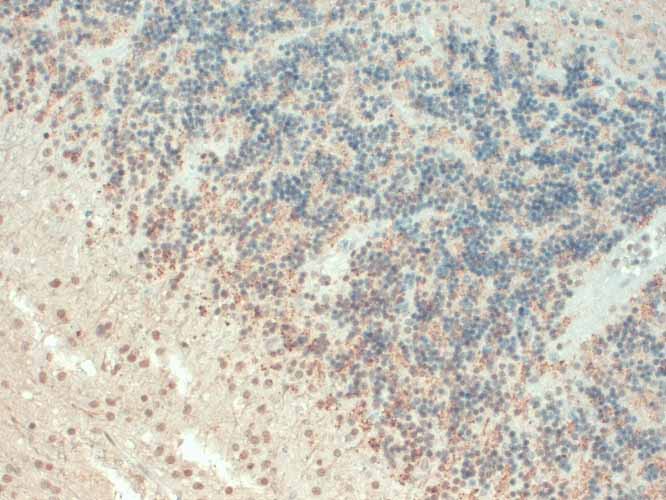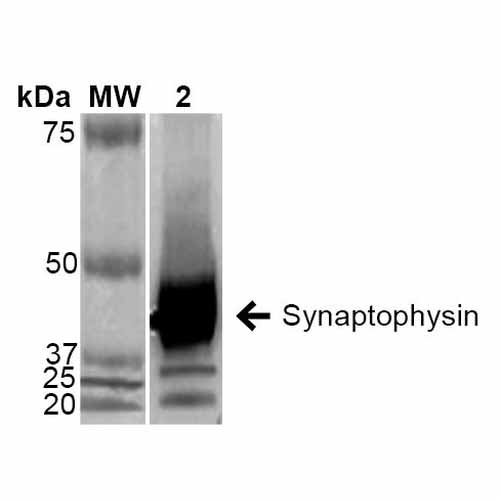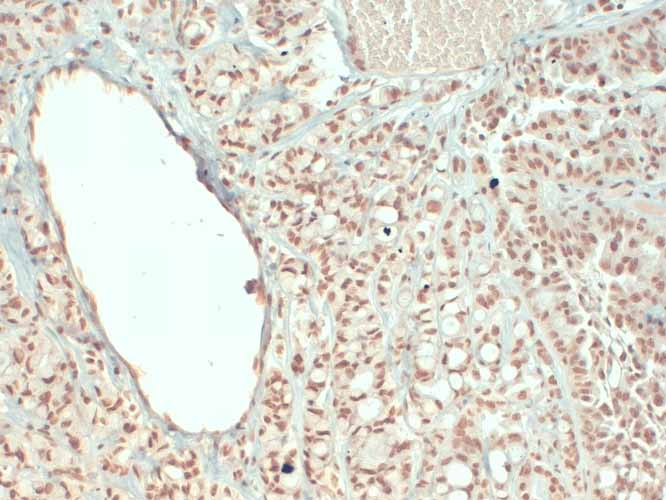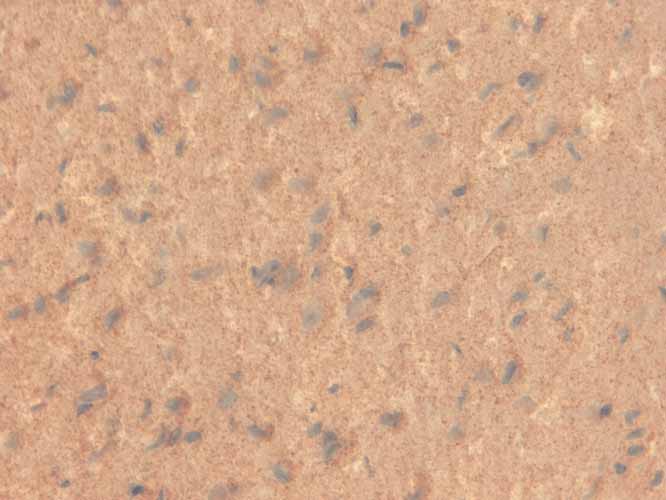Synaptophysin (native) Antibody
Synaptophysin Antibody, Clone EP10
- SPECIFICATION
- CITATIONS
- PROTOCOLS
- BACKGROUND

Application
| WB, IHC |
|---|---|
| Primary Accession | P08247 |
| Other Accession | NP_003170.1 |
| Host | Mouse |
| Isotype | IgG1 |
| Reactivity | Human |
| Clonality | Monoclonal |
| Description | Mouse Anti-Human Synaptophysin (native) Monoclonal IgG1 |
| Target/Specificity | Detects ~38kDa. |
| Other Names | SYPH Antibody, Sypl Antibody, Syn p38 Antibody, Synaptophysin Antibody, Major synaptic vesicle protein p38 Antibody |
| Clone Names | EP10 |
| Immunogen | Immunoprecipitate of human brain |
| Purification | Protein G Purified |
| Storage | -20ºC |
| Storage Buffer | PBS pH7.4, 50% glycerol, 0.09% sodium azide |
| Shipping Temperature | Blue Ice or 4ºC |
| Certificate of Analysis | 1 µg/ml of SMC-178 was sufficient for detection of Synaptophysin in 10 µg of human brain lysate by colorimetric immunoblot analysis using Goat anti-mouse IgG:HRP as the secondary antibody. |
| Cellular Localization | Cytoplasmic Vesicle | Secretory Vesicle | Synaptic Vesicle Membrane | Cell Junction | Synapse |

Thousands of laboratories across the world have published research that depended on the performance of antibodies from Abcepta to advance their research. Check out links to articles that cite our products in major peer-reviewed journals, organized by research category.
info@abcepta.com, and receive a free "I Love Antibodies" mug.
Provided below are standard protocols that you may find useful for product applications.
Background
Synaptophysin is a synaptic vesicle glycoprotein with four transmembrane domains weighing 38kDa (1). It is present in neuroendocrine cells and in virtually all neurons in the brain and spinal cord that participate in synaptic transmission. It acts as a marker for the presynaptic vesicle, and functions in synaptic vesicle exocytosis, including cholesterol-dependent vesicle biogenesis, regulation of SNARE assembly via interaction with VAMP/synaptobrevin, formation of the fusion pore initiating neurotransmitter release, and activation of vesicle endocytosis (2, 3). This gene has also been implicated in X linked mental retardation (4).
References
1. Johnston P.A., et al. (1989) J Biol Chem. 264: 1268-1273.
2. Thiele C., et al. (2000) Nat Cell Biol. 2: 42-49.
3. Valtorta F., et al. (2004) Bioessays 26: 445-453.
4. Tarpey P.S., et al. (2009) Nat Genet. 41(5): 535-543.
If you have used an Abcepta product and would like to share how it has performed, please click on the "Submit Review" button and provide the requested information. Our staff will examine and post your review and contact you if needed.
If you have any additional inquiries please email technical services at tech@abcepta.com.













 Foundational characteristics of cancer include proliferation, angiogenesis, migration, evasion of apoptosis, and cellular immortality. Find key markers for these cellular processes and antibodies to detect them.
Foundational characteristics of cancer include proliferation, angiogenesis, migration, evasion of apoptosis, and cellular immortality. Find key markers for these cellular processes and antibodies to detect them. The SUMOplot™ Analysis Program predicts and scores sumoylation sites in your protein. SUMOylation is a post-translational modification involved in various cellular processes, such as nuclear-cytosolic transport, transcriptional regulation, apoptosis, protein stability, response to stress, and progression through the cell cycle.
The SUMOplot™ Analysis Program predicts and scores sumoylation sites in your protein. SUMOylation is a post-translational modification involved in various cellular processes, such as nuclear-cytosolic transport, transcriptional regulation, apoptosis, protein stability, response to stress, and progression through the cell cycle. The Autophagy Receptor Motif Plotter predicts and scores autophagy receptor binding sites in your protein. Identifying proteins connected to this pathway is critical to understanding the role of autophagy in physiological as well as pathological processes such as development, differentiation, neurodegenerative diseases, stress, infection, and cancer.
The Autophagy Receptor Motif Plotter predicts and scores autophagy receptor binding sites in your protein. Identifying proteins connected to this pathway is critical to understanding the role of autophagy in physiological as well as pathological processes such as development, differentiation, neurodegenerative diseases, stress, infection, and cancer.





